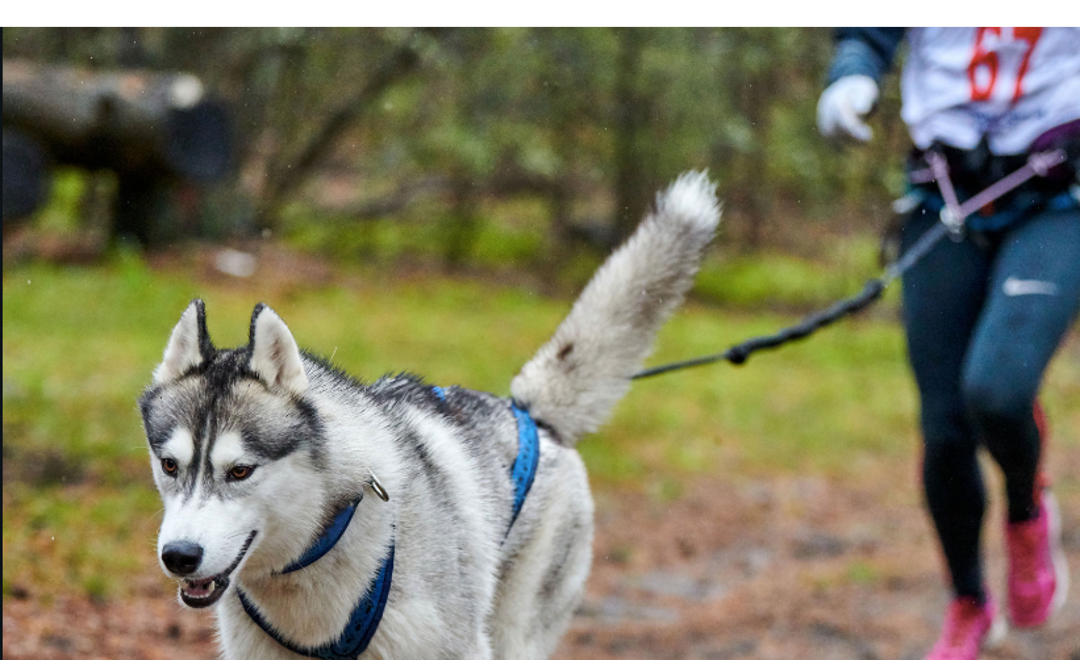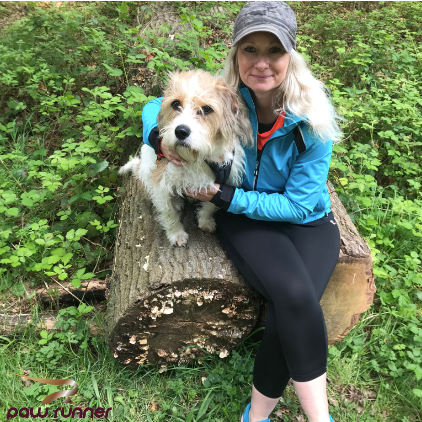
It’s the perfect time to step up your fitness and explore your local parks, tracks and trails, beaches and woodland with your faithful companion.
Running isn’t for everyone, but there is something quite special when you run with your dog. We are confident it will change your mind and give you a new motivation to get out there! After all, dogs make the best running buddies as they are loyal, loving, always by your side to pick you up when you are down, always up for a run, they make excellent pace setters and they will never let you down!
Increasing your daily and weekly exercise habits, whether it be walking or running can make a real difference to both you and your dog’s life. Leading to a healthier, happy, longer and more fulfilled lifestyle.
It is well documented that there are strong links between regular physical activity and positive mental health as it keeps you stimulated, alert, reduces stress levels and equips you to positively deal with any demanding situation.
There are also many health benefits which include weight loss, lower rates of cardiovascular disease, and a lower chance of getting Type 2 diabetes, depression and certain types of cancer.
The longer and more frequent the exercise, the better for you and your dog, as it actively promotes:
- Fun
- Keeping in shape – building and maintaining muscle tone is a great way to support joints.
- Bonding
- Longer life
- Better sleep
- Weight management – extra weight can put unnecessary stress on your dog’s joints, so keeping them trim is a good idea. Older metabolisms can be slower too, so exercise is really important.
Is it suitable for all dogs?
Whether you own a Visla or a Dachsund, any breed of dog can take part. It’s also great for reactive and nervous dogs as it can help build their confidence and give them a job to do as it helps to stimulate them.
Every dog is unique and has different capabilities. Size, age and breed have an effect on your dog’s performance ability and the type of exercise they are best suited to, so it’s important that when starting out that you take this into consideration.
We advise that you check out the Breed information Centre on The Kennel Club website to see what your dogs recommended daily exercise before starting to run with them.
If you are worried about your dogs level of health, we recommend that you consult your vet and get a health check before embarking on any exercise.
“Whether you own a Visla or a Dachsund, any breed of dog can take part.”
How to start running with your dog
Running with your dog is a fun way of encouraging both you and your dog to achieve an exercise and lifestyle goal together.
All you need to start is you, your dog(s), a suitable harness and running belt, a decent pair of running trainers, preferably suited for trail running and a ‘CAN DO’ attitude. It’s fun and a great way to stimulate your dog.
Equipment
It’s important that your dog is kitted out with a good comfortable fitting harness, especially one that’s fit for purpose to ensure they can perform to their best ability and not be put off by ill-fitted harnesses that cause sores or restricts their breathing.
A good test is to check that you can fit 2 fingers between the chest, neck and waist.
For the human, a bungee line lead that you attach to a waist/hip belt is required. The bungee function helps shock absorption for both you and your dog should there be any sudden jolt movements.
You can get various lengths of bungee lead but we would recommend a 2m lead when fully stretched to avoid your dog going off the path or you tripping up!
The belt will enable you to run hands-free with your dog and it also helps your posture so you run more upright and keeping you balanced.

Commands
Canicross originated in Europe as part of an exercise regime during the low season for mushers dog sledding. As a result, many canicrossers use musher commands to help drive their dog.
If your dogs are command trained for other sports such as dog agility or Hoopers, you can transfer those commands as your dog understands them and keeps the consistency.

Warming up and Cooling down
A simple 10-minute warm-up and cool down as part of your exercise session is so important to help avoid injury and the longevity of your workout.
Warming up before physical activity increases your heart rate and gets your blood pumping and flowing around your body, which enables more oxygen to reach your muscles.
Warm-ups activate and primes the connections between your nerve and muscles, which improves the efficiency of movement. Dynamic stretching will help your flexibility and enables you to get a longer stride and handle the uneven ground when running off-road.
Dos and Don'ts for running with your dog
- Invest in a decent harness for your dog that fits properly as it makes it safer, more comfortable and easier to control.
- Do teach your dog the basic commands to ensure a more pleasurable journey together.
- Stick to off-road running to avoid pressure on your dog’s joints and sore paw pads.
- Prepare exercise in response to the weather. If it’s hot, make sure you do light exercise and do it during the coolest part of the day such as early morning or evening when the heat of the sun has gone.
- Always warm up and cool down as part of a running session.
- Always take plenty of water on your runs.
- Bring doggy treats as a reward.
- Bring Poo bags to clean up after your dog.
- Jog where possible with your dog off the lead if and when it’s safe to do so, giving them an opportunity to run at their own pace, sniff and go to the toilet.
- Pay attention to your dog while doing exercise to ensure they are happy, not lame and not struggling to keep up.
- If excessively panting STOP, give them water and allow them to rest for a while.
- Alternate between running and walking days as you will both need time to recover.
- Don’t let them run if under the age of 1 year to 18 months old (depending on breed) as their growth plates are still developing so a lot of exercise can cause them harm later on in life.
- Don’t take your dog for exercise on a full stomach. Wait at least 1 hour for both your stomachs to settle before doing activity.
- Don’t feed your dog until 30 minutes after exercise otherwise it can bloat if you feed them straight away.
- Don’t run on roads for long periods of time as it can badly affect your dog’s joints and cause pad problems with their paws.
- Don’t push your dog to run faster, longer and harder if they are struggling and unable to do so, as this will be classed as abuse.
- Don’t run with a normal collar and lead as it can pull on your dog’s neck, affecting the airwaves and making it uncomfortable and cause injury.
- Don’t start hard and fast. It’s important you work your way up to fitness. If you are a seasoned runner, but your dog is a beginner, you need to slowly increase their fitness level safely to avoid injury.
It’s always good to check out a local Canicross group in your area, as they can advise you on the best harness for your dog and can show you how to correctly fit it. They can also give you advice on the basic commands and it’s a great way to introduce you to the sport safely and responsibly and to meet fellow runners and dogs to keep you motivated.
Whether you are a total beginner or a fitness superstar we have a monthly challenge for you to choose, from 3 miles to 200 miles to complete over a month in your own time, at your own pace, and in any location to fit around your lifestyle and work.
Once you complete your challenge you will receive a bespoke medal and Paw Runner dog bandana.
We have a Paw Runner Pack community Facebook group where people motivate each other to get active, post pictures of themselves with their pooches in action, offer advice and focus on positivity.
Running was first introduced to me as a way to lose weight, but also accidentally became escapism from the demands of a stressful business. It empowered me with a positive and strong mindset to help effectively deal with any difficult challenges along the way.
My best fur buddies, Barney, Poppy and I would put our best paws forward and run around the local woods. Not only was a positive change seen within me both physically and mentally, but also in my dogs.
Their coats shone, and they were happier, fitter and more stimulated ever before. It was a win, win for a better lifestyle and mindset all around.
I am making it my mission that human and dogs are given the best opportunities to lead a happy, fulfilled and healthier lifestyle, one paw at a time.
Our Expert
Now a qualified Running Leader as part of English Athletics, ‘Paw Runner’ was born during lockdown.
Paw Runner offers virtual monthly walking and running challenges aimed at humans and their dogs, encouraging them to get more active, fitter and healthier together whilst strengthening their bond.
For More Information: www.thepawrunner.com

